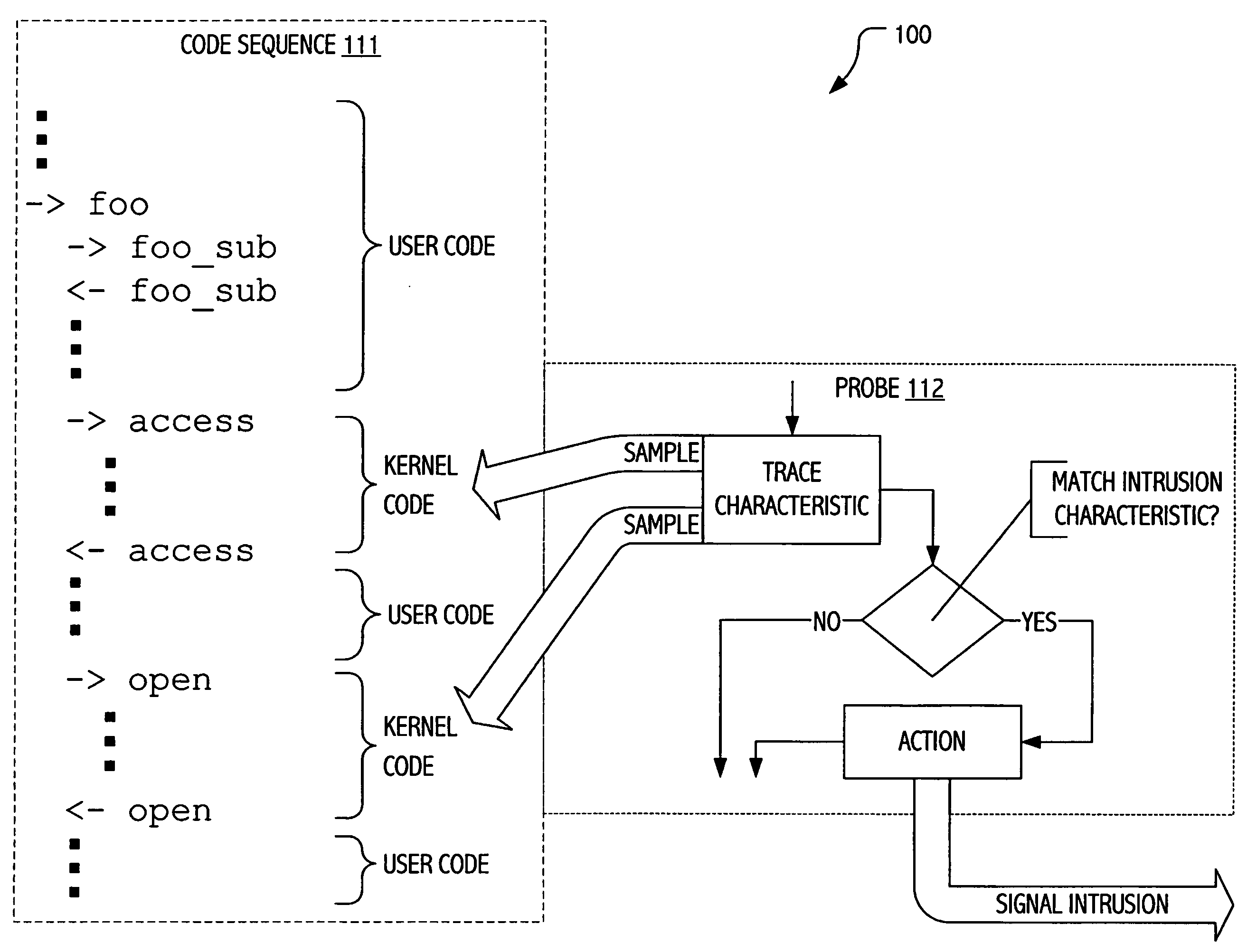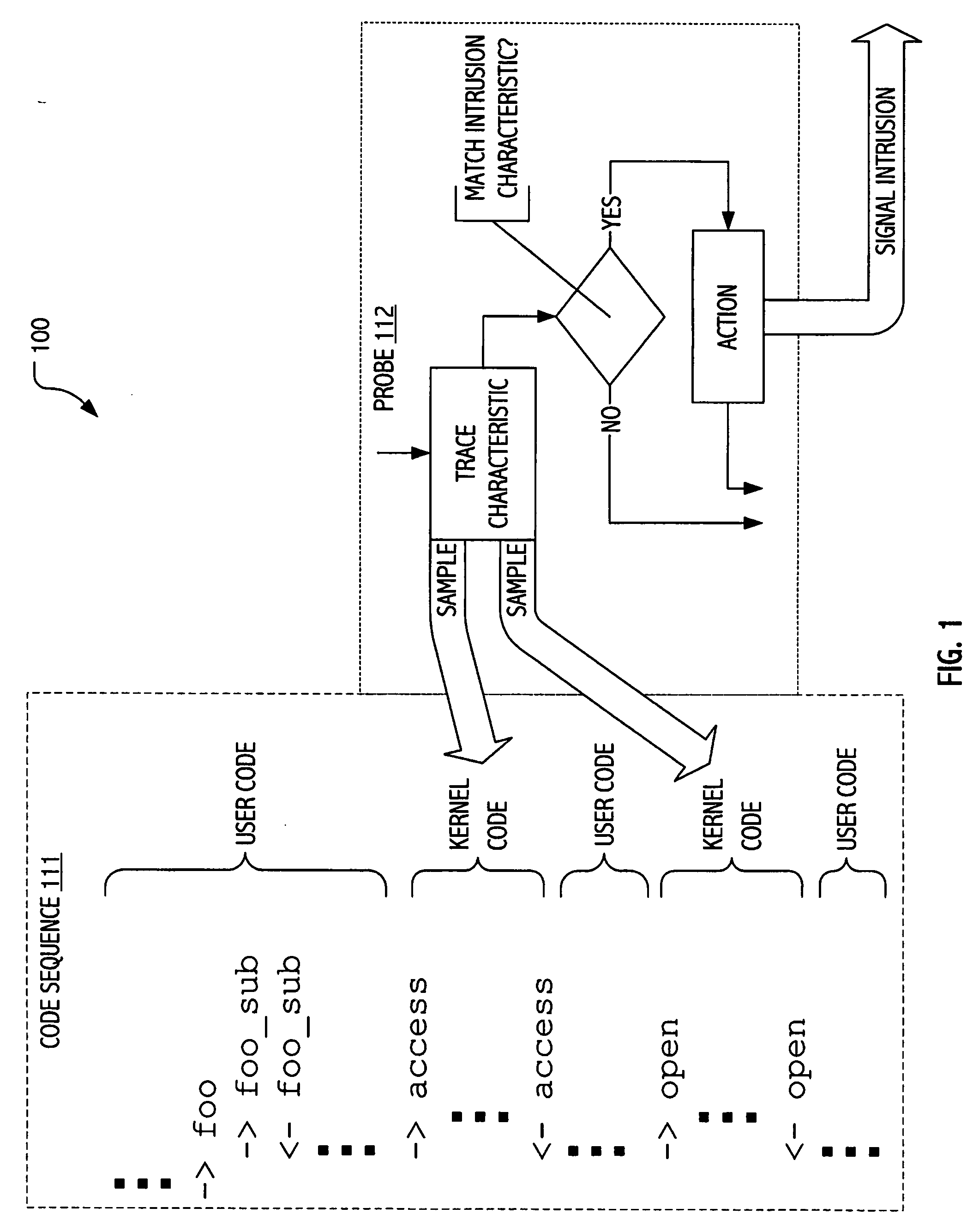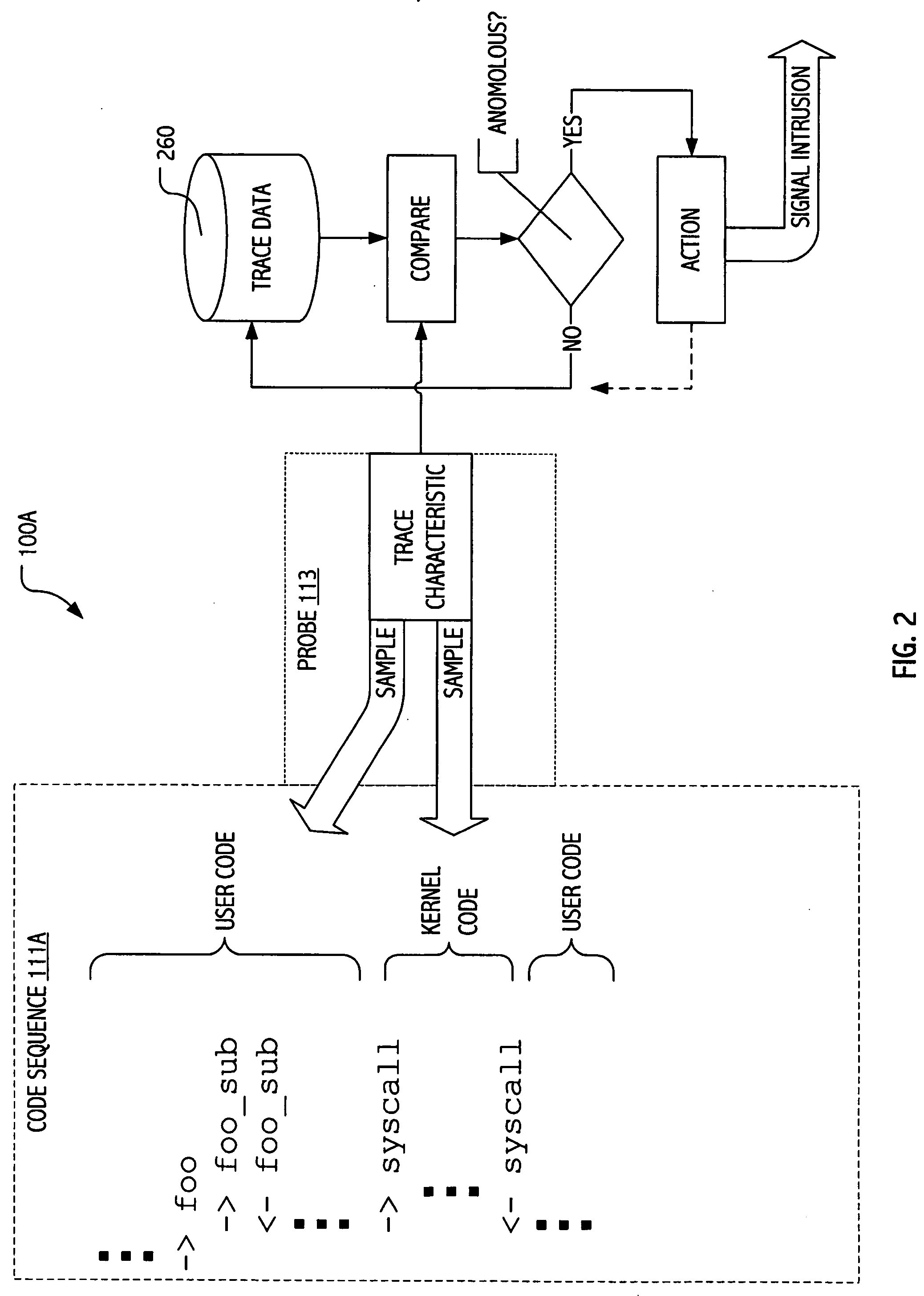Intrusion detection using dynamic tracing
a dynamic tracing and intrusion detection technology, applied in the field of computer security, can solve the problems of widespread recognition of the vulnerability of computer systems, configurations, software and information codings and protocols to unauthorized access or use, and persisting vulnerabilities in many system or software instances, so as to efficiently characterize the runtime behavior of production code and low overhead
- Summary
- Abstract
- Description
- Claims
- Application Information
AI Technical Summary
Benefits of technology
Problems solved by technology
Method used
Image
Examples
Embodiment Construction
[0015] The description that follows presents certain illustrative embodiments of a computer security technique that employs dynamic tracing to instrument code, typically production code, without requiring access to source code, indeed without requiring recompilation or even restart of the code to be instrumented. We employ a dynamic tracing environment called DTRACE (available from Sun Microsystems, Inc. with implementations of the SOLARIS 10 Operating Environment) to dynamically instrument code in ways previously not achievable and exploit certain dynamically introduced instrumentation to facilitate signature-oriented and / or anomaly-oriented intrusion detection strategies described herein. SOLARIS is a trademark of Sun Microsystems, Inc. in the United States and other countries.
[0016] While facilities and operational attributes of a DTRACE dynamic tracing environment make it a particularly attractive environment in which to implement some of our techniques, exploitations of the pr...
PUM
 Login to View More
Login to View More Abstract
Description
Claims
Application Information
 Login to View More
Login to View More - R&D
- Intellectual Property
- Life Sciences
- Materials
- Tech Scout
- Unparalleled Data Quality
- Higher Quality Content
- 60% Fewer Hallucinations
Browse by: Latest US Patents, China's latest patents, Technical Efficacy Thesaurus, Application Domain, Technology Topic, Popular Technical Reports.
© 2025 PatSnap. All rights reserved.Legal|Privacy policy|Modern Slavery Act Transparency Statement|Sitemap|About US| Contact US: help@patsnap.com



